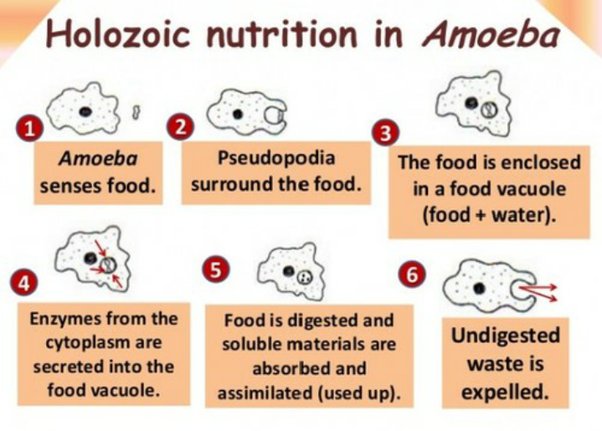Introduction
Holozoic nutrition, a fascinating feeding strategy observed in various organisms, involves the ingestion of complex organic substances, subsequent digestion, and absorption for nourishment. This guide provides a step-by-step exploration into holozoic nutrition, with a focus on a real-life example to illustrate this intricate process.
Step 1: Defining Holozoic Nutrition Begin by defining holozoic nutrition as a type of heterotrophic nutrition where organisms consume other living or dead organisms to obtain essential nutrients. This section sets the stage for understanding how holozoic nutrition serves as a fundamental survival strategy.
Step 2: The Organism: Carnivorous Mammals as an Example Select a real-life example to exemplify holozoic nutrition – carnivorous mammals. These organisms, including lions, tigers, and wolves, actively capture and consume other animals to fulfill their nutritional needs. Highlight the diversity within this group, showcasing how different species exhibit holozoic nutrition in distinct ecological contexts.
Step 3: Hunting and Capturing Prey Delve into the hunting and capturing phase of holozoic nutrition. Carnivorous mammals showcase specialized adaptations such as sharp teeth, strong jaws, and agile bodies that aid in pursuing and capturing their prey. Understanding these adaptations provides insights into the evolutionary aspects of holozoic nutrition in carnivorous mammals.
Step 4: Ingestion and Digestion Explore the subsequent stages of ingestion and digestion. Carnivorous mammals employ powerful digestive enzymes to break down complex proteins, fats, and carbohydrates present in their prey. The stomach and associated digestive organs play a crucial role in this process, transforming ingested food into simpler molecules for absorption.
Step 5: Absorption and Assimilation Uncover the absorption and assimilation phase of holozoic nutrition. The small intestine, equipped with villi and microvilli, facilitates the absorption of digested nutrients into the bloodstream. These nutrients are then transported to various cells and tissues, providing energy and building blocks for the mammal’s growth, maintenance, and reproduction.
Additional Information
- Role of Canines and Molars: Highlight the specialized dental structures such as canines for tearing and molars for grinding present in carnivorous mammals. These adaptations showcase the importance of dental morphology in holozoic nutrition.
- Metabolic Adaptations: Discuss metabolic adaptations in carnivorous mammals, emphasizing how their physiology is tailored to efficiently utilize nutrients obtained through holozoic nutrition. This may include high metabolic rates and efficient nutrient storage mechanisms.
- Ecological Impact: Explore the ecological impact of holozoic nutrition in carnivorous mammals, emphasizing their role in regulating prey populations, influencing community dynamics, and contributing to overall ecosystem balance.
- Comparative Analysis with Other Nutrition Strategies: Provide a comparative analysis between holozoic nutrition in carnivorous mammals and other nutritional strategies observed in different organisms. Contrasting holozoic nutrition with autotrophic or saprophytic nutrition enhances the understanding of nutritional diversity in the natural world.
By navigating through these steps and additional information, individuals gain a comprehensive understanding of holozoic nutrition, exemplified through the practical example of carnivorous mammals. This guide serves as a valuable resource for those eager to explore the intricacies of feeding strategies in the animal kingdom.
Examples of Holozoic Nutrition
Examples of organisms having a holozoic mode of nutrition are Human Beings,Cat, lion, deer, crow, frog, fish, protozoa like Amoeba, paramecium, insectivorous plants etc.
The process of holozoic nutrition can be outlined in the following stages-
- Ingestion: the organism absorbs the food.
- Digestion: Digestive enzymes break down the food into smaller molecules.
- Absorption: The smaller molecules are absorbed into the bloodstream.
- Assimilation: The absorbed molecules are transported to cells throughout the body.
- Egestion: Undigested food is eliminated from the body.
Holozoic nutrition is a complex process involving multiple organs and enzymes. It plays a crucial role for animals as it enables them to absorb the nutrients necessary for their survival and well-being.
Example of Holozoic Nutrition – Amoeba

Example of Holozoic Nutrition- Paramecium

Example of Holozoic Nutrition- Human Beings
